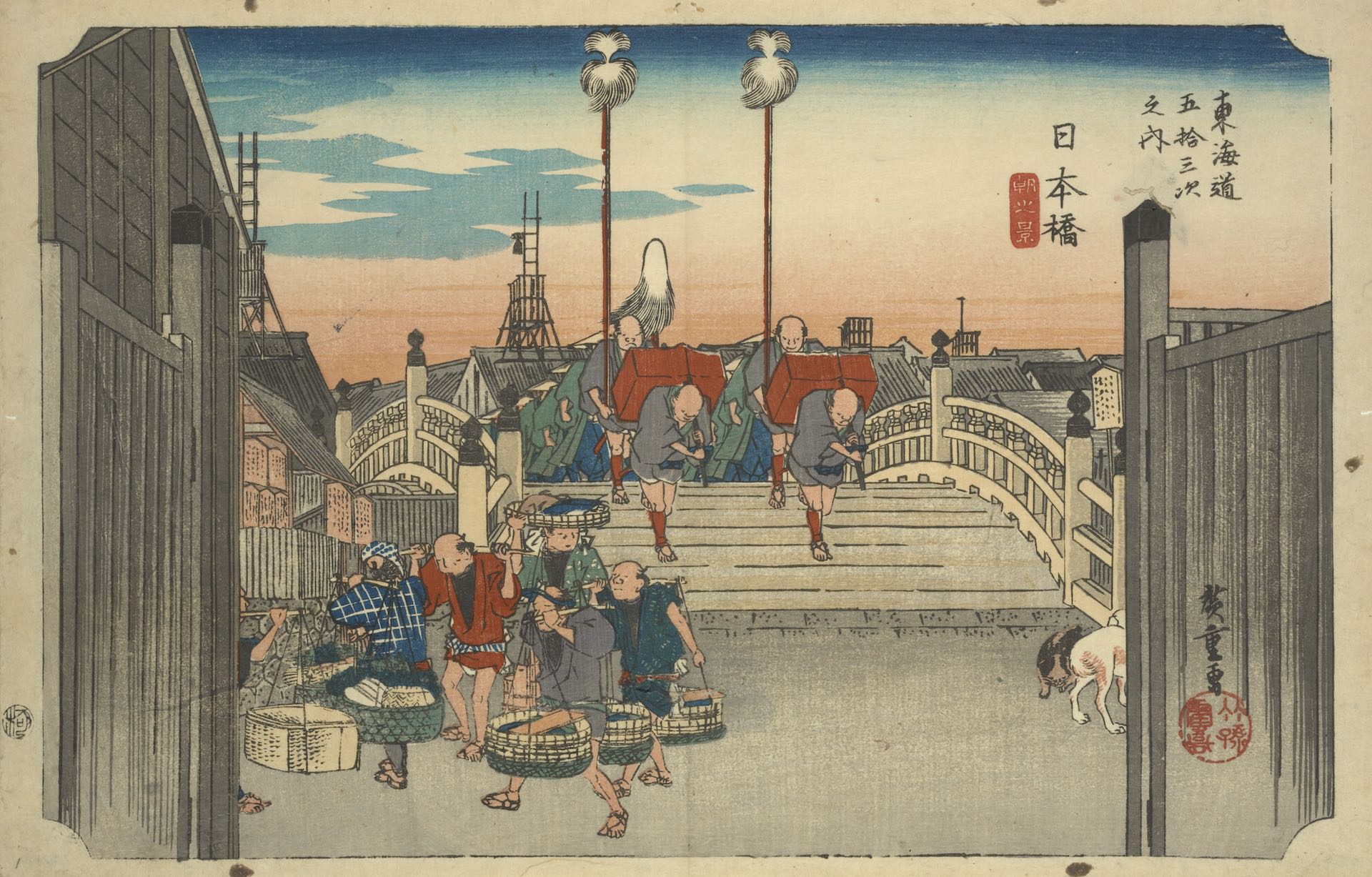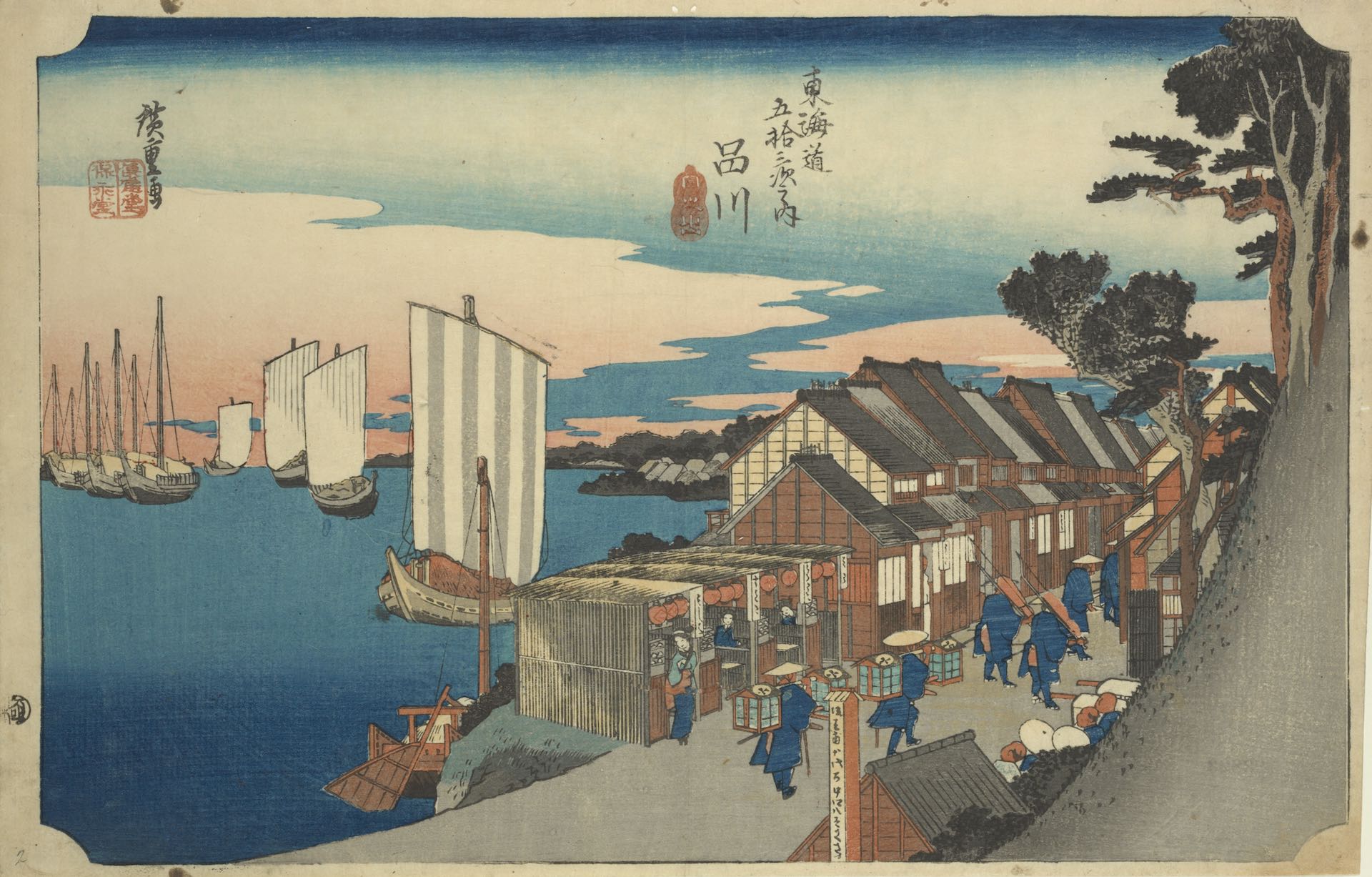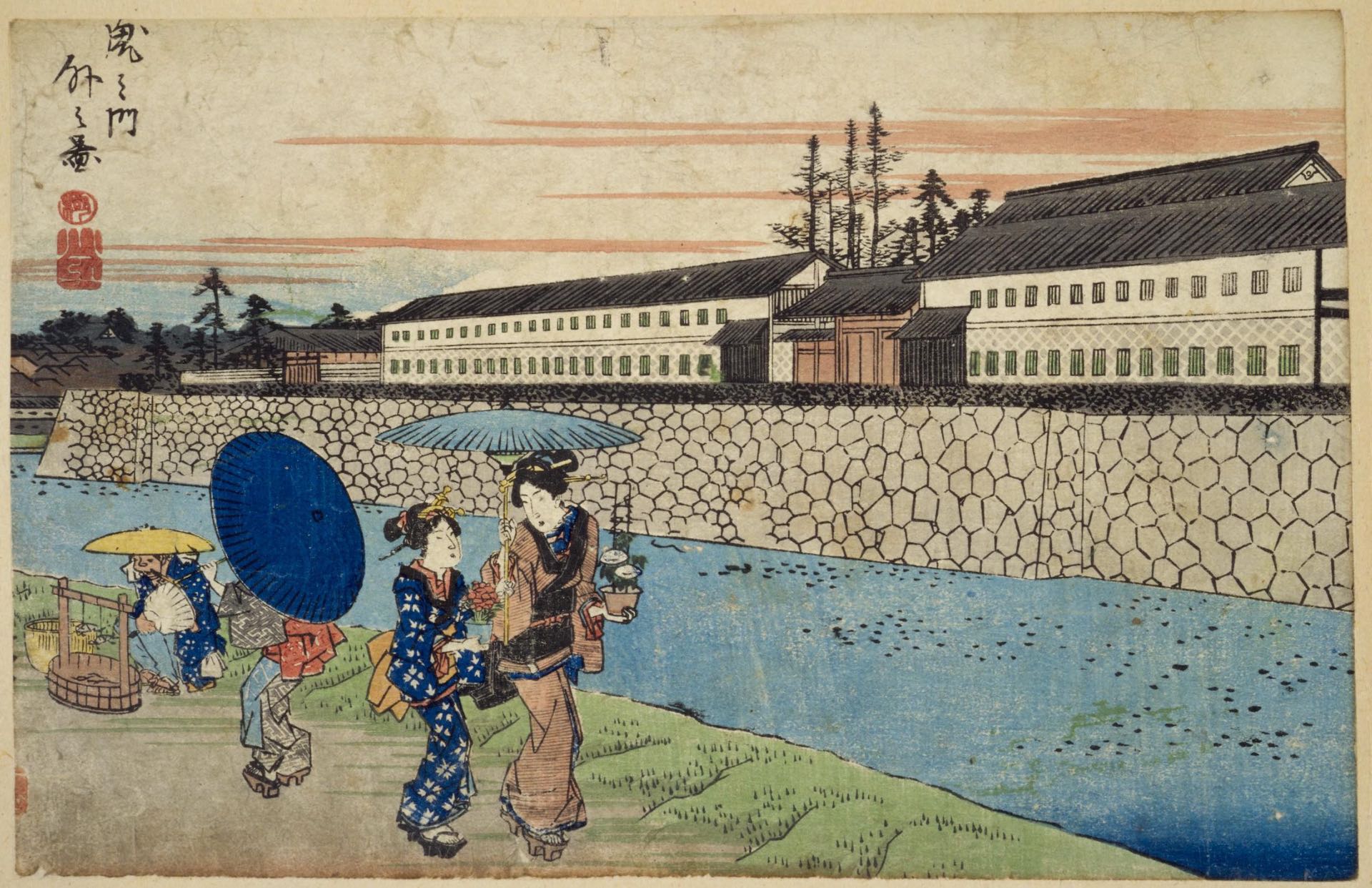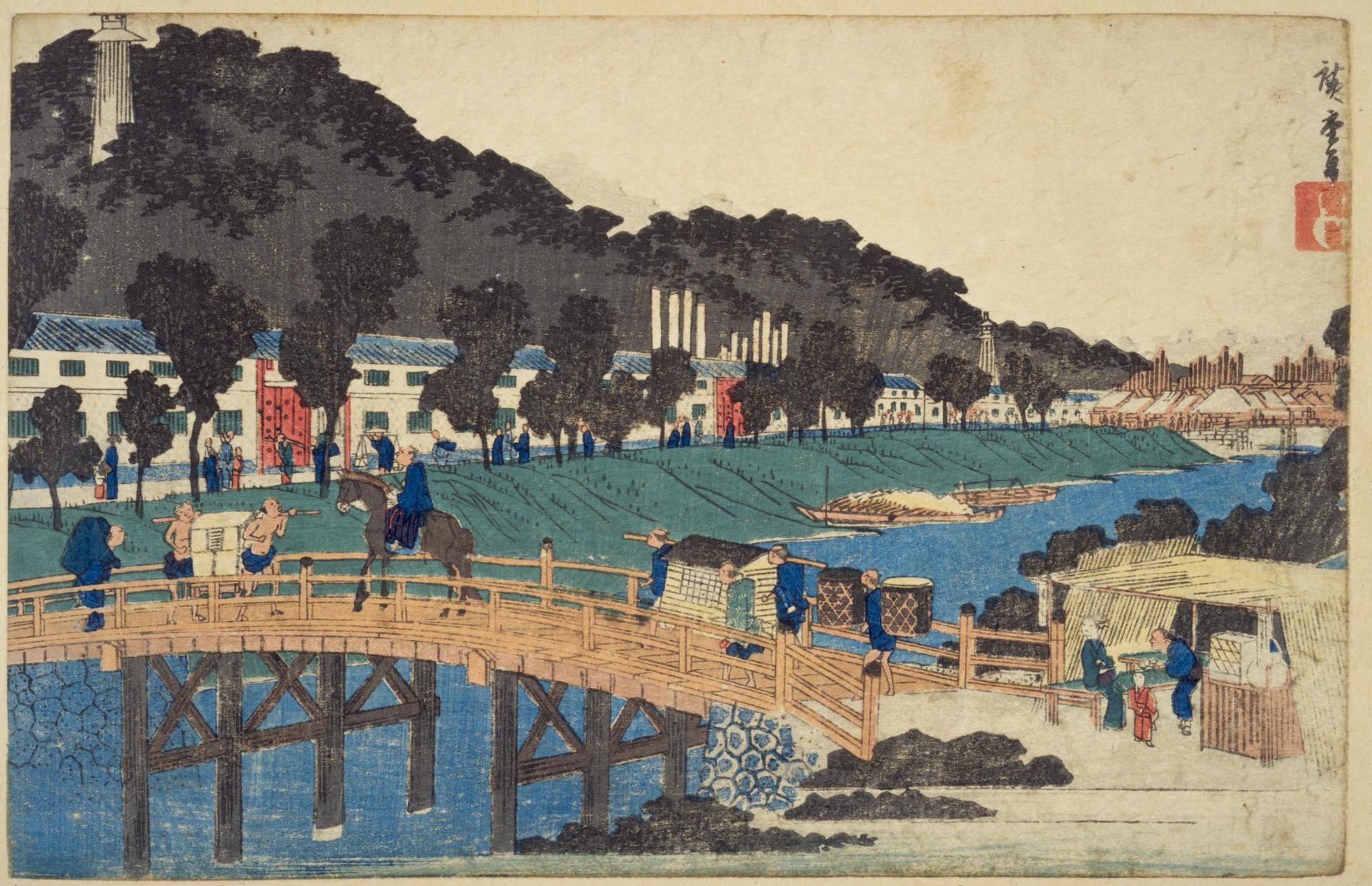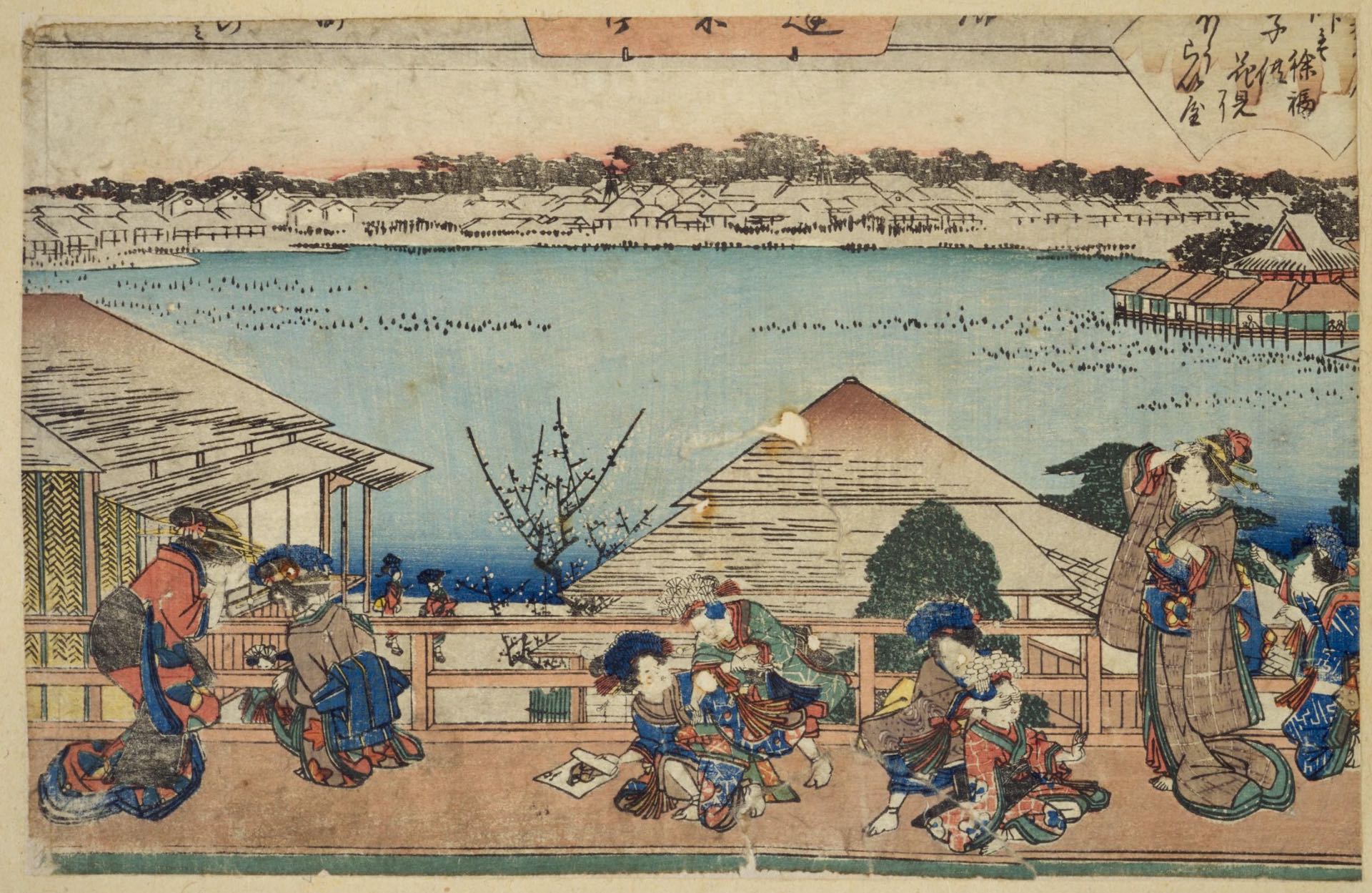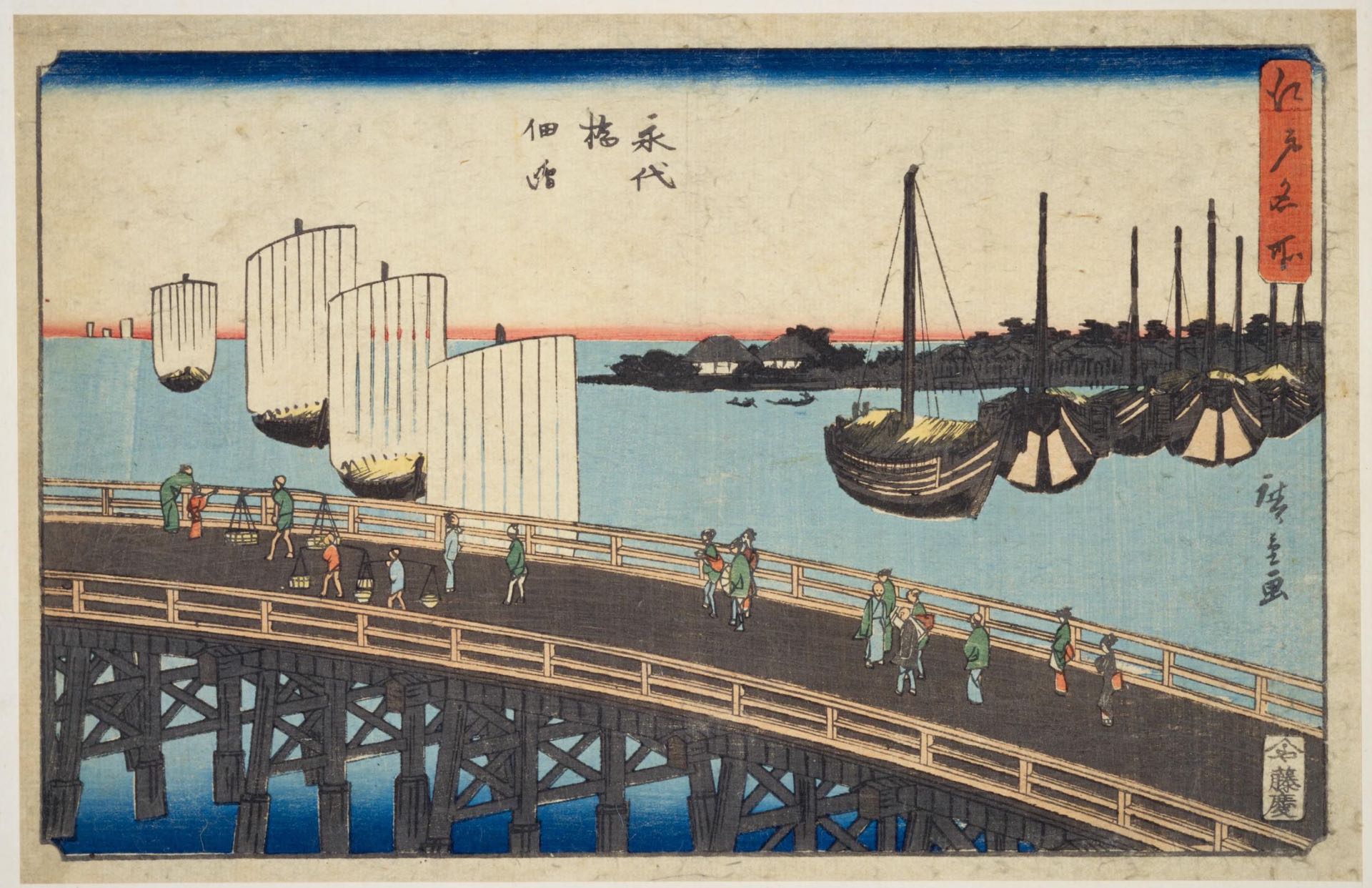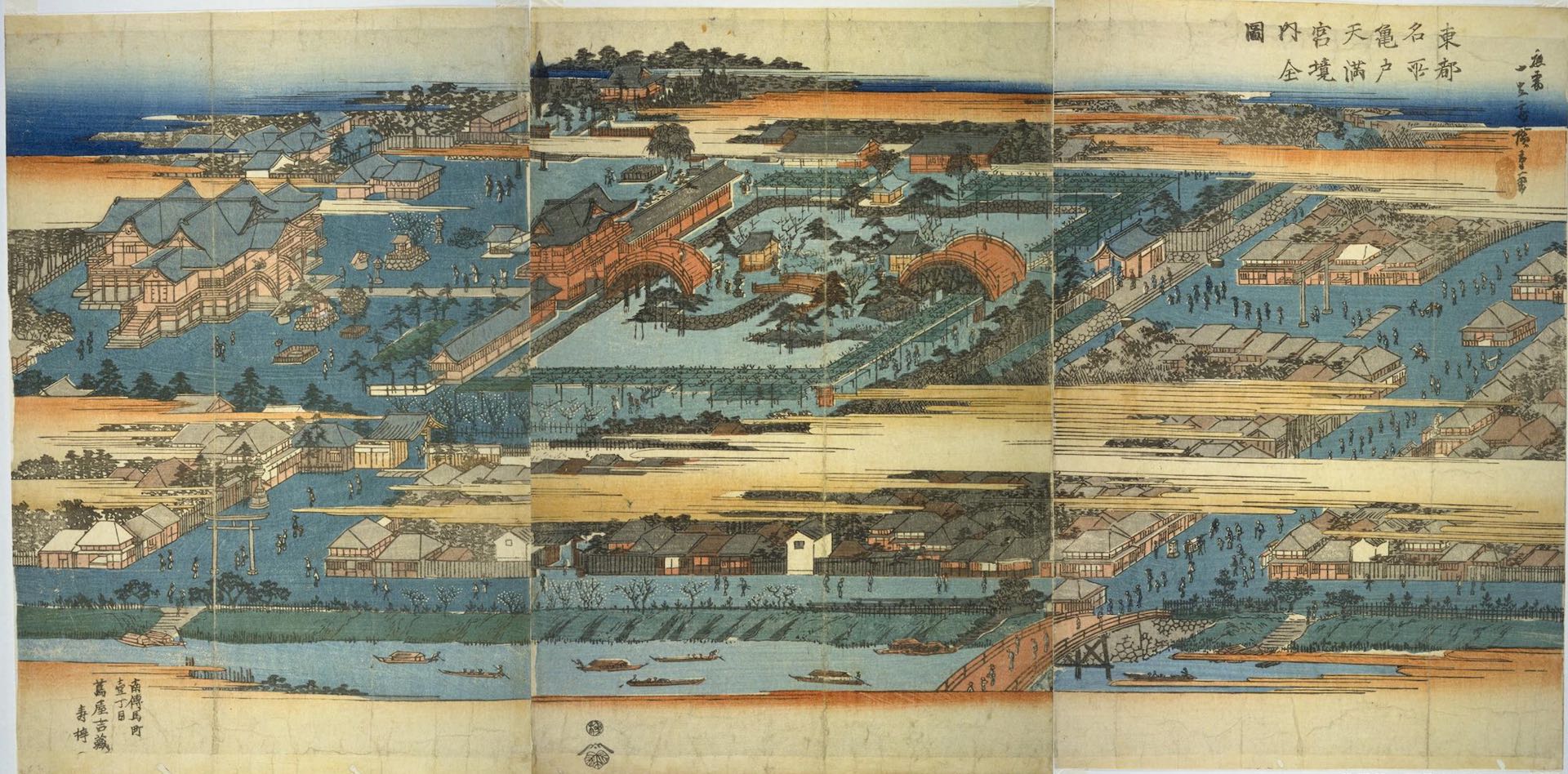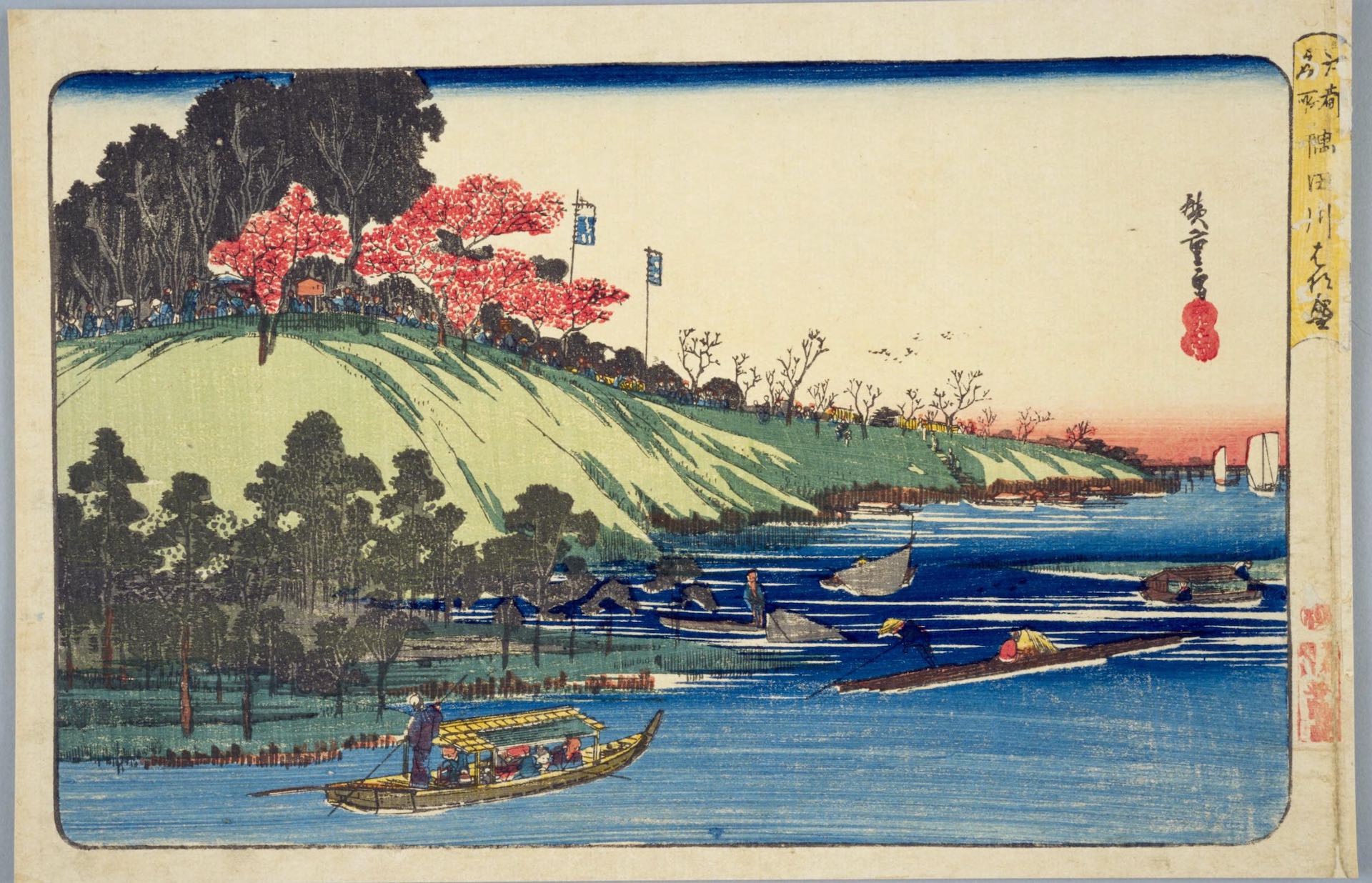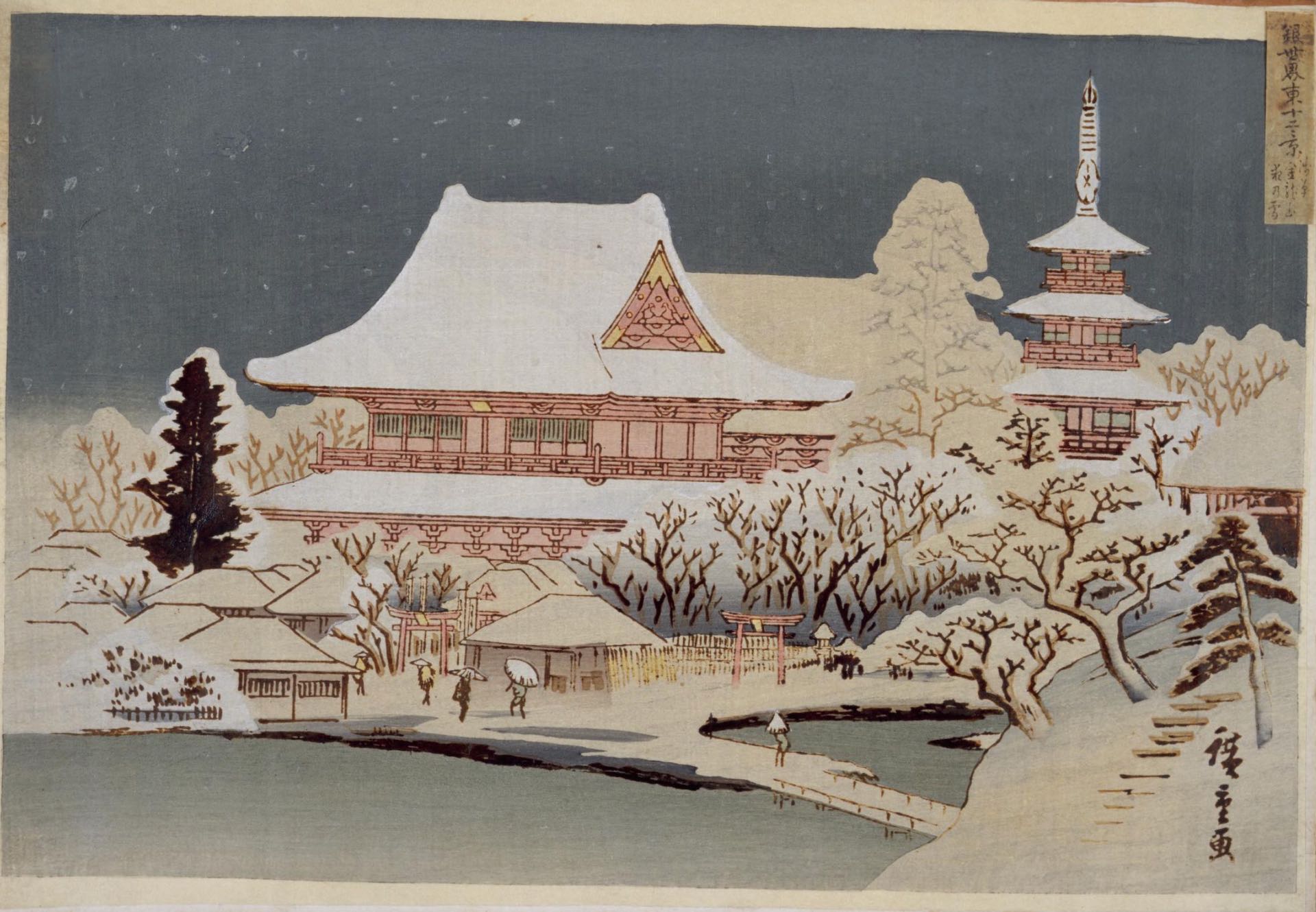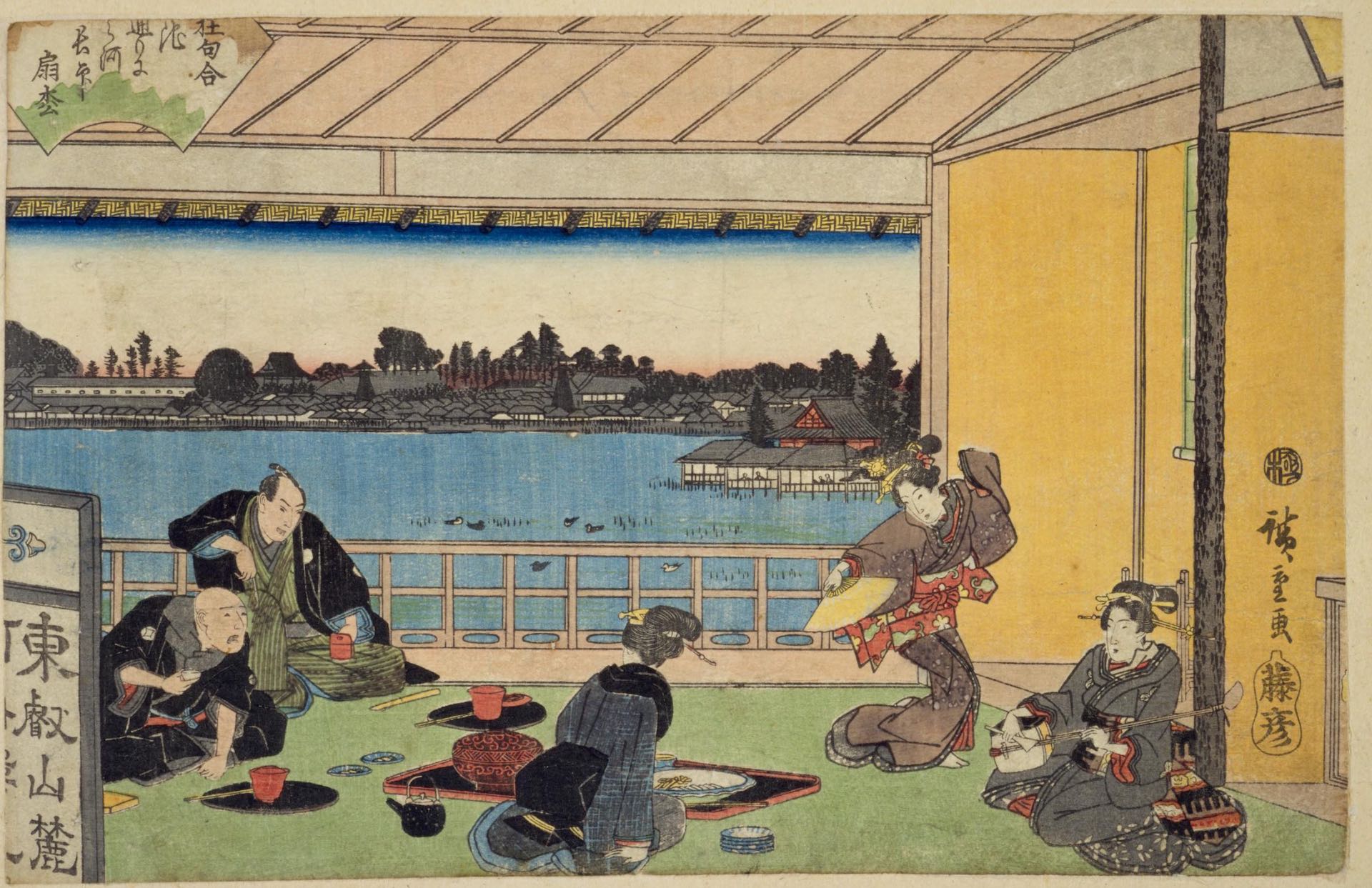Edo Waterfront
After the establishment of the Tokugawa Shogunate, Edo developed rapidly. At the same time as the townscape was constructed, the population continued to increase, and it is said that it became a city of 1 million after the middle period.
The population at that time was about 700,000 in London and about 500,000 in Paris. Edo was the largest city in the world at the time.
The metropolis of Edo produced a culture completely different from that of Western Europe, and various popular cultures flourished.
Kabuki, ukiyo-e, sumo wrestling, etc. all flourish under the leadership of the common people. In terms of architecture, instead of large-scale temples, shrines, and castles, sukiya architecture, theaters for kabuki, noh, and ningyo joruri were built.
Then, masterpieces were born in relatively small-scale architecture such as private houses in farming villages and townhouses in cities.
In the Edo period, water transport occupied an important position in distribution. Riverbanks were built all over Edo.
The riverbank became a node for water transportation, where people gathered, and the openness of the waterfront space created many sights and entertainment venues. Edobashi-Hirokoji, which is located at the end of the Edobashi bridge over the Nihonbashi River, was also bustling with cargo and passengers arriving and departing on the riverbanks, and floor shops and teahouses lined both sides of Hirokoji.
The public space in the space near this waterside is also a “road space”.
Piazza San Marco in Venice is one example of public waterfront spaces, but Japanese people seem to prefer “Flowing Promenades” that makes them feel like they are walking along the road.
Ukiyo-e drawn by Hiroshige Utagawa
Edo Waterfront River Canal City Plan
DATA
- Category:
Urban
- Type:
Research, City plan
- Location:
Tokyo
- Team:
YDS
- Size:
-
- Status:
IDEA
